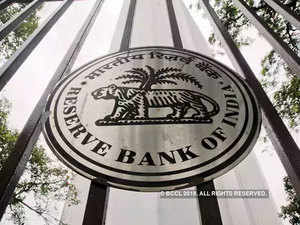 Agencies
AgenciesAs the ink dries on Reserve Bank of India Governor Shaktikanta Das’ order to permit restructuring of loans to alleviate the Covid-19 inflicted pain, the debate about its soundness is on.
Forbearance has been a part of Indian central banking lexicon for decades - and the practice is difficult to throw out. At the same time, there are lessons from the past that needed to be kept in mind before granting the next boon.
After months of debate, Governor Das unveiled one that rested on the Prudential Framework for Resolution of Stressed Assets issued in June 2019, a palatable formula born out of a legal tussle between bankrupt borrowers and a regulator entrusted with safeguarding the common man’s nest egg.
To begin with, this is not old wine in a new bottle. Unlike the Corporate Debt Restructuring that was abused, this one is well structured to ensure that only those businesses that fell behind due to the Covid attack benefit and not those already in distress before the virus went viral.
It has kept the spirit of the Insolvency and Bankruptcy Code with a timeline. It expires by December 31 and has to be implemented by June 2021. Furthermore, the sting in the tail is that the tenor of the loan can’t be extended by more than two years.
``In the light of past experience with regard to use of regulatory forbearance, necessary safeguards have been incorporated, including prudent entry norms, clearly defined boundary conditions, specific binding covenants, independent validation and strict post-implementation performance monitoring,’’ said Das. ``The underlying theme of this resolution window is preservation of the soundness of the Indian banking sector.’’
It is anybody’s guess on how effective it would be in helping industry recover as many factors, such as the agreement among lenders and the ability of businessmen to bring in their share of equity. But this reflects the RBI’s efforts to not repeat the mistakes of the erstwhile CDR mechanism.
Many purists, including two former central bankers – Urjit Patel and Viral Acharya – put the blame on the CDR for most of Indian banking’s ills.
The CDR plans were so abused that most of the companies that availed them never revived. One estimate shows that of the thousands of cases admitted under the IBC since 2017, more than half were under CDR.
It was more for bankers to paper over bad loans than reviving businesses. They just kicked the can down the road.
Given that one round of clean-up has happened and that as a nation India has moved toward orderly bankruptcy proceedings, an old style restructuring without timelines and restrictions would have turned the clock back.
But at the same time a regulator can’t be blind to the plight of businesses that were genuinely harmed by the Covid lockdown. A rigid stance might have probably led to a clash similar to what Das’ predecessor Patel had with the government.
For his part, Das has given what the industry wanted. But at the same time, there are doubts whether it would be the panacea for the ills beyond Covid19.
There was unanimity on the CDR regime. There’s disagreement on the Covid 19 restructuring plan.
Download The Economic Times News App to get Daily Market Updates & Live Business News.
Subscribe to The Economic Times Prime and read the ET ePaper online.
Download The Economic Times News App to get Daily Market Updates & Live Business News.
Subscribe to The Economic Times Prime and read the ET ePaper online.









 Get Unlimited Access to The Economic Times
Get Unlimited Access to The Economic Times
